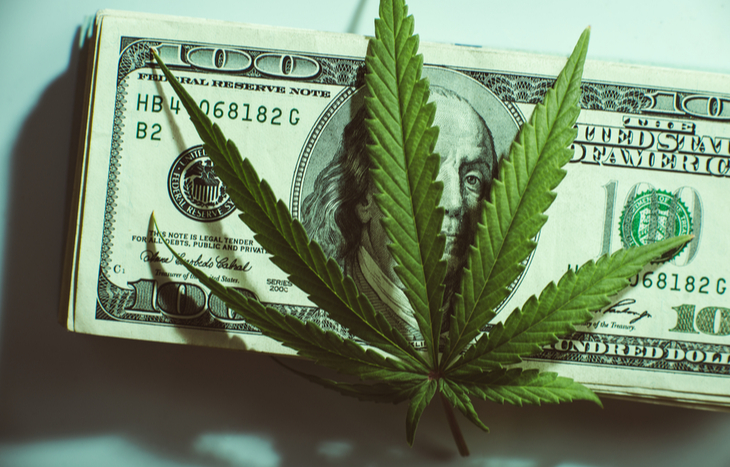A Brief History of 4/20 and the Hazy Origins on its 50th Anniversary

The history of 4/20 dates back long before sober investors started paying attention to marijuana. The pot-smoker’s day to celebrate all things green has its origins back in the 1970s. The story starts with five friends at San Rafael High School in California who were known as “the Waldos.” This small group had no idea that their quixotic quest would become the stuff of legend. But isn’t that what makes an origin story so compelling?
Once a week, the Waldos would get out of football practice and set off on a Goonies-like treasure hunt at 4:20 p.m. They would remind each other during the day by echoing the call of “420” through the halls of San Rafael High. But after practice, the quintet wasn’t searching for gold or pirate ships. On the map they carried in hand, the X was supposed to mark the spot of an abandoned pot crop.

The crop itself was legendary in its own right. It was planted by a member of the Coast Guard. But eventually, the service member could no longer tend to it. The map was allegedly provided by the original pot planter. And despite being deserted, it still grew, well, like a weed. Or so the story goes…
When delving into the history of 4/20 and its relationship to a psychoactive drug, it makes sense to take each piece of info with a grain or two of salt. This end of the story is still a bit uncertain. The Waldos never actually found the colossal cannabis crop. But the call of “420” went on to live a life of its own. And it soon became code for going to smoke pot. However, it wouldn’t have caught on like it did without the help of a certain little band from Palo Alto.
How the History of 4/20 Evolved Out of the Hallways
One of the Waldos had an older brother. And that older brother was friends with Phil Lesh. Phil just happened to be one of the founding members of the Grateful Dead. The Waldos were fans of the Dead. And the Dead and the Waldos were both fans of smoking pot. When the Waldos called for a 420-session backstage one night, the term stuck. And the perpetually traveling band helped spread the good word of 420 across the country.
Slowly but surely, the history of 4/20 grew out of the counterculture movement and into the mainstream. City parks from Washington Square in Manhattan to Golden Gate in San Francisco fill up every April 20 with a haze of pot-smoking revelers. The open nature of the gatherings is part celebration, part civil disobedience. And the cops tend to look the other way – even in places where marijuana is still illegal. After all, the cops can’t arrest ‘em all.
Then of course, California lawmakers entered 420 into legal canon with the introduction of medical marijuana legislation SB 420 back in 2003. The bill was notable not just for its number, but for what it did. It helped clarify the scope Proposition 215 while firmly establishing the California medical marijuana program.
That bill helped usher in a massive sea change in marijuana politics. Since SB 420, 36 states and four territories have approved medical marijuana. And 17 states, two territories and Washington D.C. have legalized recreational pot. SB 420 was a watershed bill in U.S. history. And not only did it help usher in a new era of pot policies, it firmly established the history of 4/20 into the mainstream culture. And these days, even the stiff suits on Wall Street have taken notice.
Yea, It’s Still Illegal, But Not Totally
Marijuana is still classified as a Schedule I drug (meaning it has a high potential for being abused) at the federal level in the U.S. That’s been a real thorn in the side of pot stock investors.
For the time being, both the New York Stock Exchange (NYSE) and Nasdaq won’t allow U.S.-based marijuana companies to be listed on their exchanges. This is mostly due to them dabbling in a product that’s not-quite-legal on the federal level. But there are still lots of opportunities on over-the-counter exchanges.
Meanwhile, the U.S. remains the only state in North America where marijuana isn’t legal. That (in theory) gave companies – especially those in Canada – an opportunity to get a leg up on U.S. marijuana companies. And in some ways, it did.
While the hippy-cum-lawmaker history of 4/20 marked major turning points in marijuana culture, Canadian companies were afforded the most exposure from being able to list on major exchanges. That got the attention of investment firms. It also led to huge merger deals. Other Canadian pot companies scored major financial backing from partnerships.
Despite all the exposure Canadian pot firms have received, they’ve still got some catching up to do their U.S. counterparts. As Profit Trends’ Matthew Carr pointed out, when measured by quarterly revenue, there’s only one Canadian company in the top five. That’s despite the fact that U.S. companies aren’t allowed access to proper banking – which will hopefully be overturned soon via the SAFE Act. Plus, they’re peddling in goods the federal government declares illegal. What a time to be alive!
Far From a Conclusion on The History of 4/20
Revenue in the marijuana industry is surging. Global sales of pot rose by 48% last year. Meanwhile, legal changes are happening around the world. And here in the U.S., the cannabis industry is likely to see lots of changes of its own. But even before those changes take place, we won’t have to look far to see a cloud of pot smoke billowing up from parks around the world today.
The Eurpoean marijuana market is expected to be worth $37 billion by 2027. As Matthew Carr reported recently, the U.S. market could be worth $100 billion by the next decade. In the meantime, Mexico remains the largest marijuana market to date.
But the industry is capable of turning on a dime. We’ve seen it before. However, the upside is we’re not seeing the manic, sky-high valuations of 2017 and 2018. There are bargains to be had. If you’d like to learn more about these bargains, we suggesting signing up for Matthew Carr’s Profit Trends e-letter. Our friend Matthew has been keeping his finger on the pulse of the cannabis industry since it was first recognized by Wall Street. He also shared with us the infographic below to help celebrate the storied history of 4/20.
In the meantime, we suggest investors check out some of our favorite weed stocks and some of the most promising U.S. marijuana stocks that Matthew has told us about.








